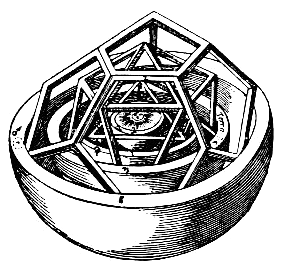Sacred Geometry

Sacred Geometry is the notion that the divine can be found in art, music, landscapes, pretty much anything. In architecture and astronomy the metaphors are usually horizontal or numerical in nature, often reflecting the idea that the earth below could reflect the heavens above: pagan circles (the Sun and Moon), squares and Roman rectangles.
Colors added a further dimension - Roman (and Hindu and Chinese) reds and yellows, for example.
The circle was the most prominent. (Cf. the Hindu saṃsāra and the Chinese wuji 无极, nothingness.) The Ptolemaic system had concentric circles radiating out from Earth into the Heavens. It seemed like a good idea at the time and it found architectural expression in the dome. It was into this context that the Greek and Latin crosses were introduced, isolating the Cross from the ancient pagan notion of the Sun Cross (or Solar Cross or Sun Wheel) and creating instead the architectural concept of the basilica:






Most western architecture today is relentlessly secular: rectangles and boxes, numerically 1, 2 and 4. That's not so true of Muslim countries, where architectural circles, pointed arches and minarets are still a form of religious expression, relying on the triangle, numerically 3, as we do for the Trinity, the Blade and Chalice... Male and Female, Fire and Water...


Alternative configurations of 5 and 6 have continued to flourish, relying on the triangle: the Pentagram and Pentacle, the Hexagram and the Star of David/Seal of Solomon...




